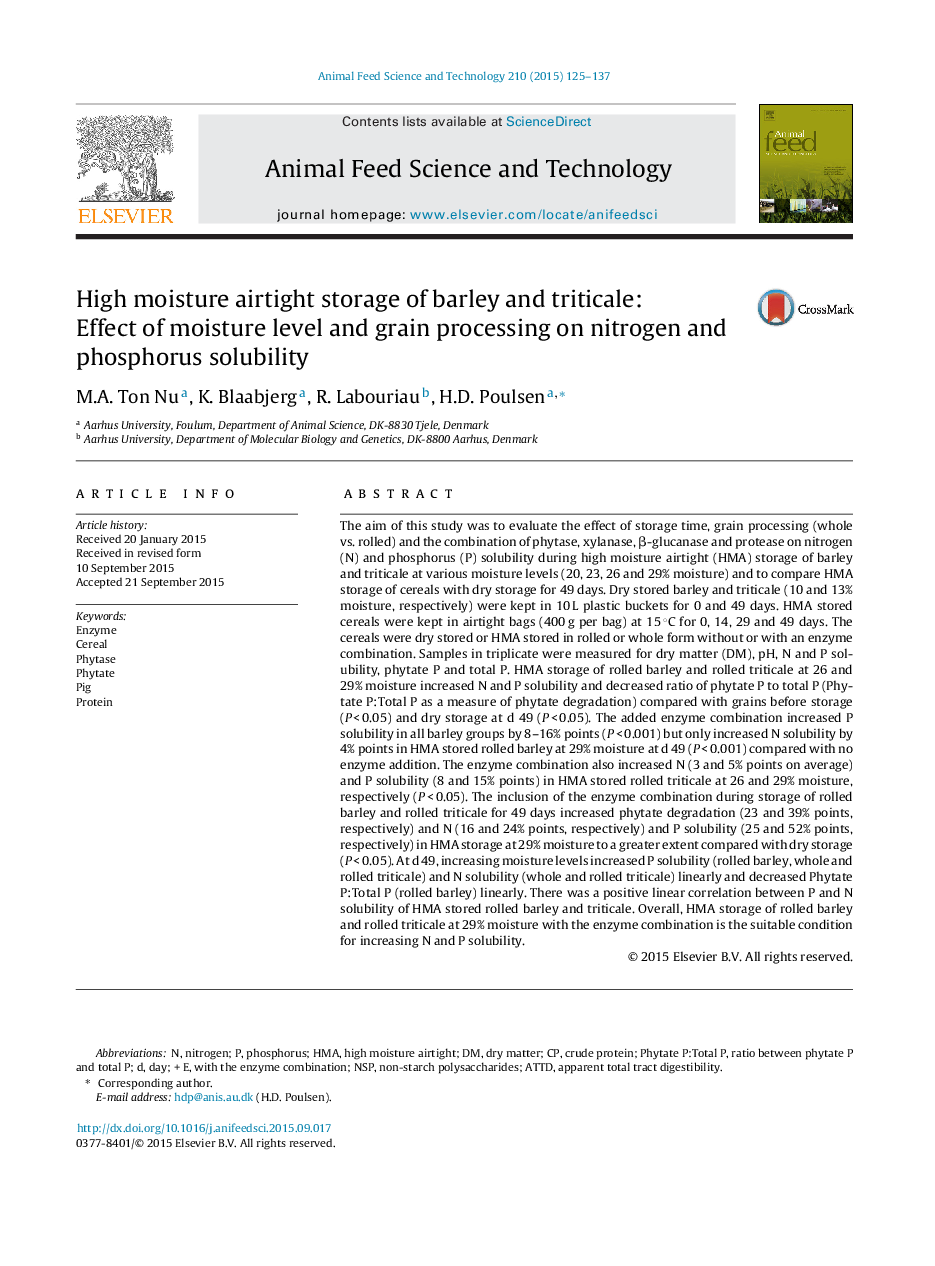| Article ID | Journal | Published Year | Pages | File Type |
|---|---|---|---|---|
| 2419322 | Animal Feed Science and Technology | 2015 | 13 Pages |
•High moisture airtight storage of barley and triticale enhanced N and P solubility.•Rolling and high moisture levels are the main factors affecting N and P solubility.•The highest N and P solubility was not reached at moisture levels of 20–29%.•Extrinsic enzymes enhanced P solubility more effectively in barley than in triticale.•N solubility was positively correlated with P solubility in rolled cereals.
The aim of this study was to evaluate the effect of storage time, grain processing (whole vs. rolled) and the combination of phytase, xylanase, β-glucanase and protease on nitrogen (N) and phosphorus (P) solubility during high moisture airtight (HMA) storage of barley and triticale at various moisture levels (20, 23, 26 and 29% moisture) and to compare HMA storage of cereals with dry storage for 49 days. Dry stored barley and triticale (10 and 13% moisture, respectively) were kept in 10 L plastic buckets for 0 and 49 days. HMA stored cereals were kept in airtight bags (400 g per bag) at 15 °C for 0, 14, 29 and 49 days. The cereals were dry stored or HMA stored in rolled or whole form without or with an enzyme combination. Samples in triplicate were measured for dry matter (DM), pH, N and P solubility, phytate P and total P. HMA storage of rolled barley and rolled triticale at 26 and 29% moisture increased N and P solubility and decreased ratio of phytate P to total P (Phytate P:Total P as a measure of phytate degradation) compared with grains before storage (P < 0.05) and dry storage at d 49 (P < 0.05). The added enzyme combination increased P solubility in all barley groups by 8–16% points (P < 0.001) but only increased N solubility by 4% points in HMA stored rolled barley at 29% moisture at d 49 (P < 0.001) compared with no enzyme addition. The enzyme combination also increased N (3 and 5% points on average) and P solubility (8 and 15% points) in HMA stored rolled triticale at 26 and 29% moisture, respectively (P < 0.05). The inclusion of the enzyme combination during storage of rolled barley and rolled triticale for 49 days increased phytate degradation (23 and 39% points, respectively) and N (16 and 24% points, respectively) and P solubility (25 and 52% points, respectively) in HMA storage at 29% moisture to a greater extent compared with dry storage (P < 0.05). At d 49, increasing moisture levels increased P solubility (rolled barley, whole and rolled triticale) and N solubility (whole and rolled triticale) linearly and decreased Phytate P:Total P (rolled barley) linearly. There was a positive linear correlation between P and N solubility of HMA stored rolled barley and triticale. Overall, HMA storage of rolled barley and rolled triticale at 29% moisture with the enzyme combination is the suitable condition for increasing N and P solubility.
